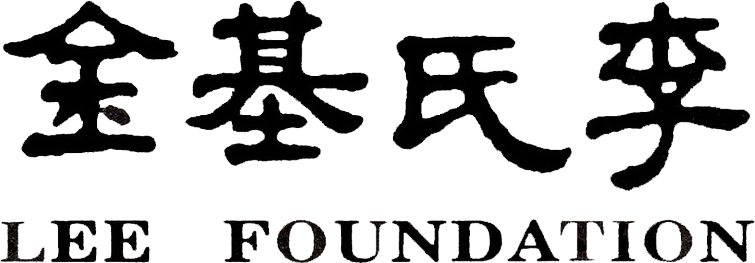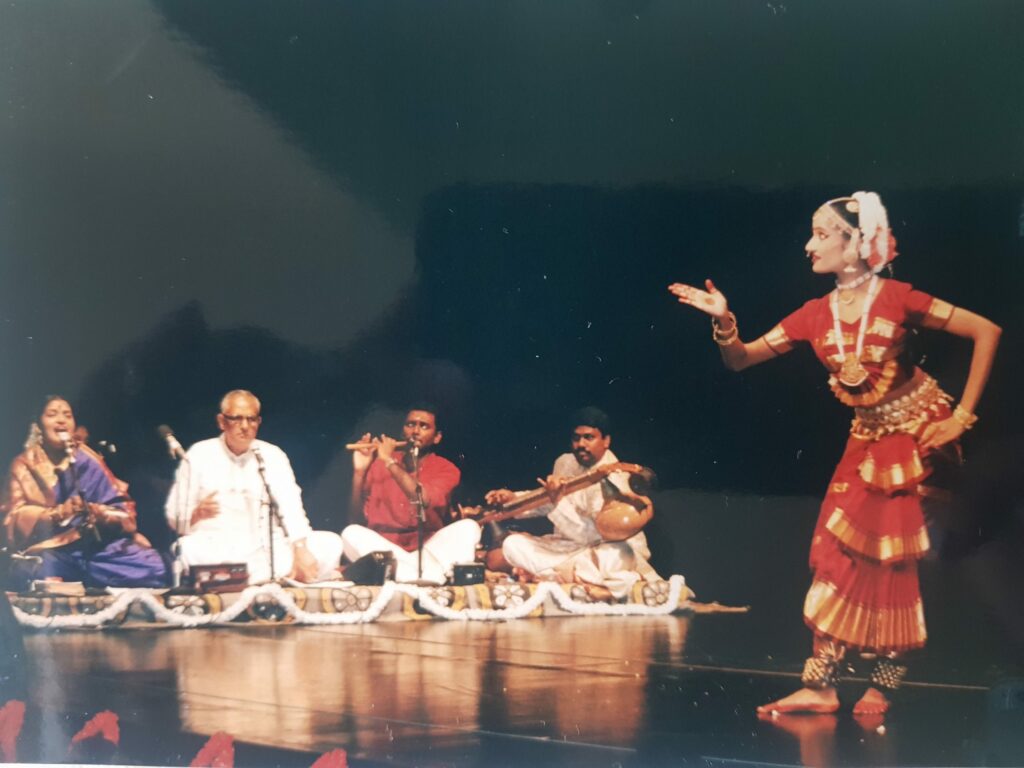
By Vidhya Nair “Performing is not about the self alone. It is about the audience, the collective. The spirit to connect with people and collaborating to create.” Since childhood, Seema has been associated with Apsaras Arts. As a performer, teacher and core team member, her dance journey has nurtured her love and appreciation for the Founders and the path they have created. In this interview, she shares her many insights and lessons.VN: Seema, you’ve been with Apsaras Arts now for most of your life. Can you share how it began? SH: It all started with my mother, Shamala Devi. She grew up in the Geylang area in the 60s-70s. There, she was neighbours with the Vadivelu sisters (Kala & Bhavani). In the late 60s, she was often their chaperone for their dance classes at SIFAS. She yearned to learn it as she watched them but her parents couldn’t afford to send her. So, when I came along, she considered it a personal achievement to have me dance. I grew up in the 80s & 90s watching dance performed on TV and live performances and I noted the known dancers in my community like Gowri Pillai & Bindu Nambiar alongside the Navaratri programs I attended in person. This sparked my early interest. VN: How did Bharatanatyam begin for you? Tell us about those early years of learning. SH: I started at Kala Mandir (later Temple of Fine Arts) when I was 4-5years old, but I lost interest quickly. [In later years, when I began to teach Bala Bharatham at Apsaras Arts, my own experiences at that age became the impetus for me to create a syllabus friendly to young children.] When I was 8 years old, my mother enrolled me at Kallang Community Centre after being introduced to it by a neighbour. Neila Mami was already established there. A larger-than-life personality, intimidating and admired by many. I started there learning under Veshnu (for under a year before he left to train under Guru Adyar Lakshmanan in Chennai) and later Vani, both Mami’s senior students. I appreciated Vani’s teaching style greatly. There are some who have the right personality to teach children. Vani was patient, pastoral and spoke in a gentle tone. It was a great way to begin. During those schooling years, I participated in many Navaratri programs, TV shows and performed at the Narayana Mission. In 1997, I recall my first Chingay which brought me into contact with Mami for the first time. By 1998, I came under Mami’s direct tutelage. As a teenager, I was taken in by Mami – her witty sense of humour, the colonial British tilt in her accent and her varied expressions.
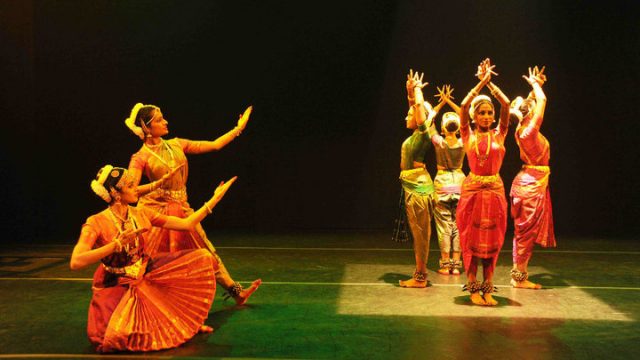
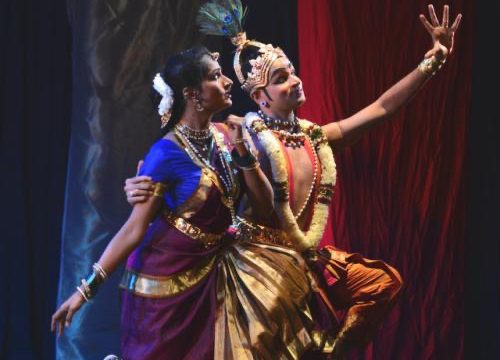
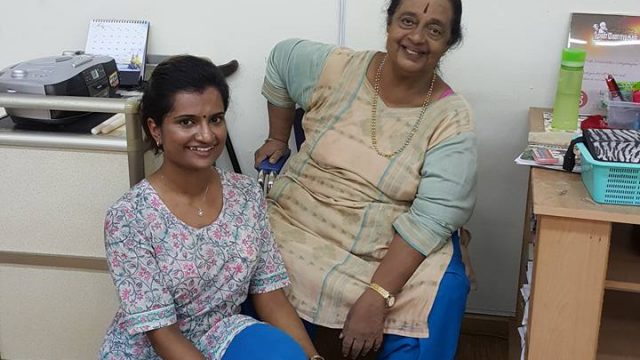
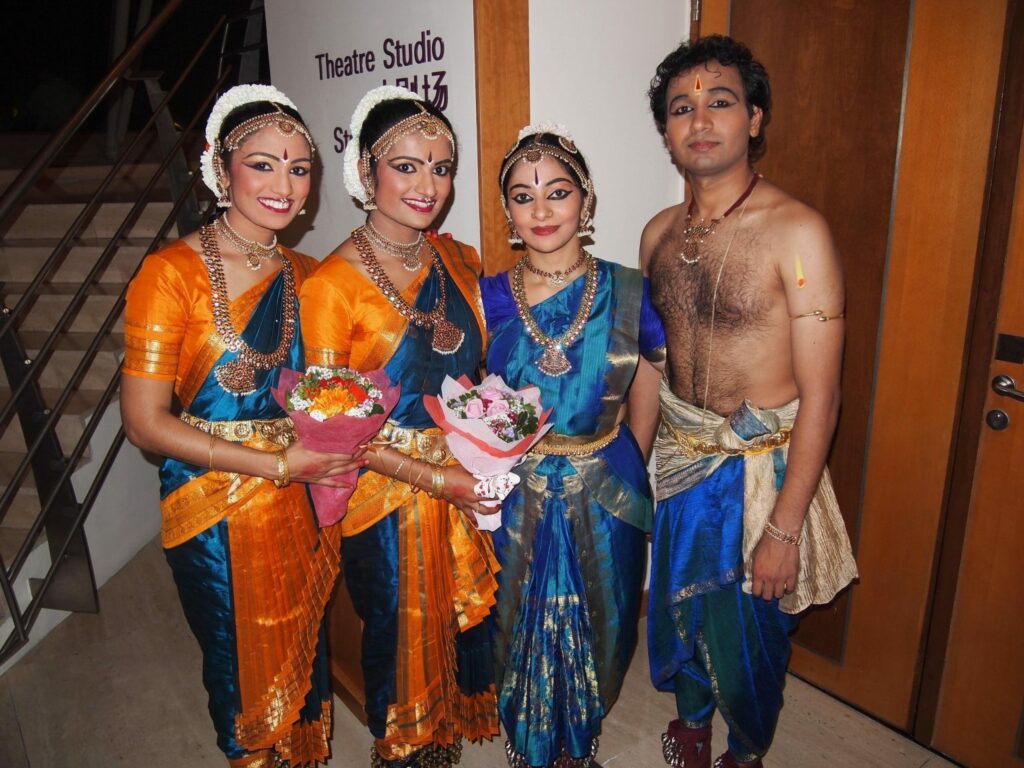
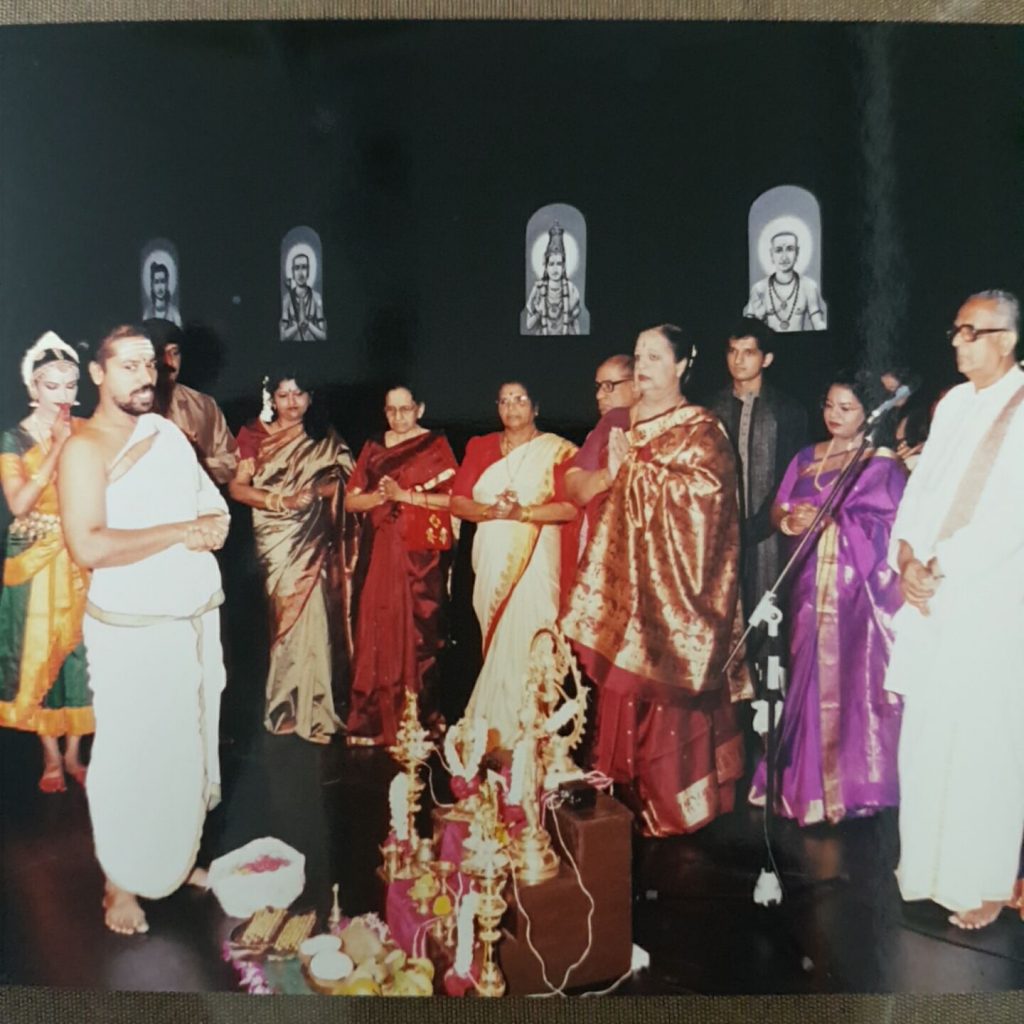
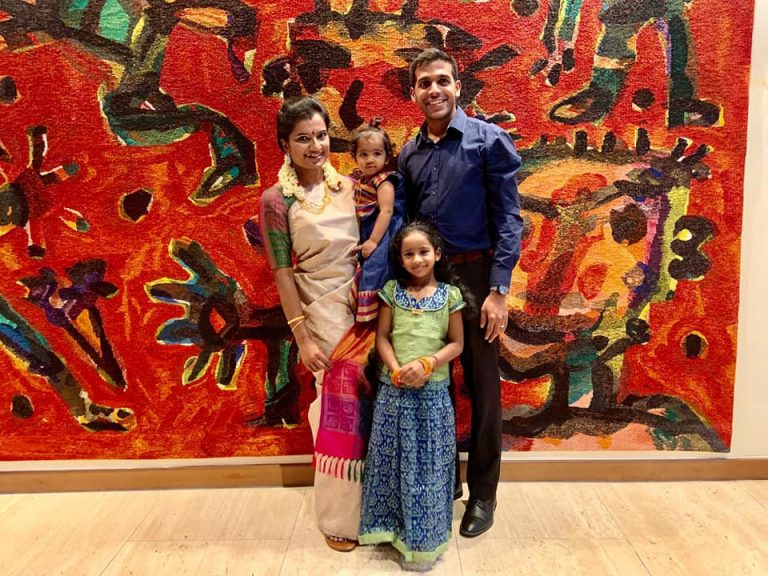
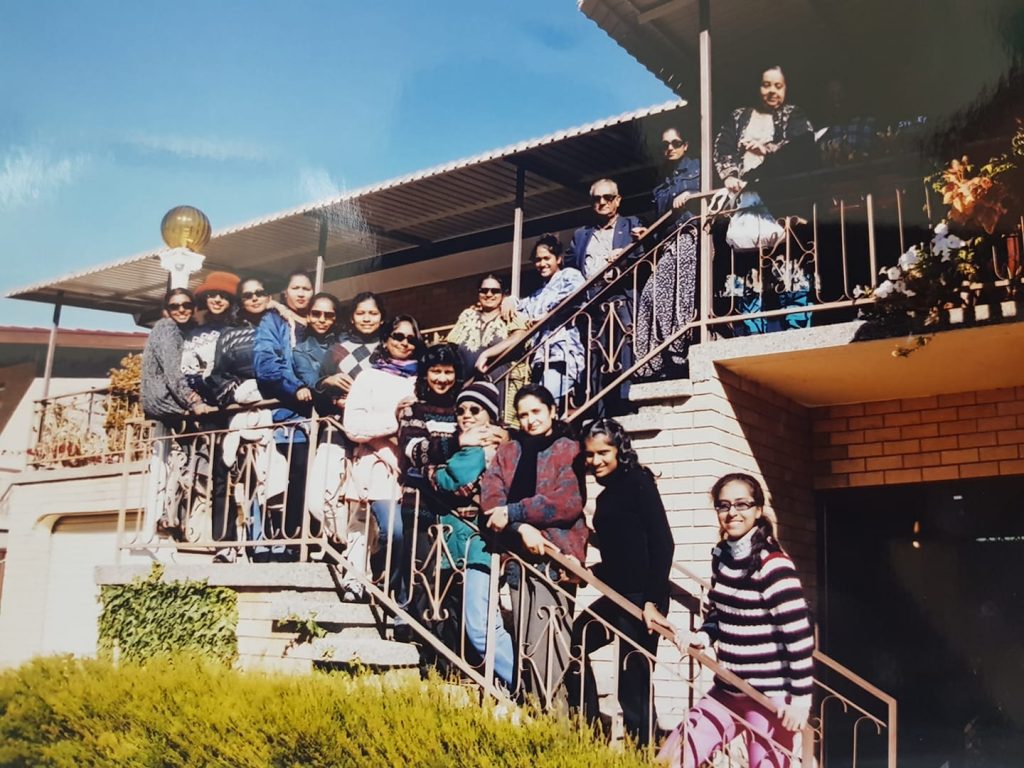
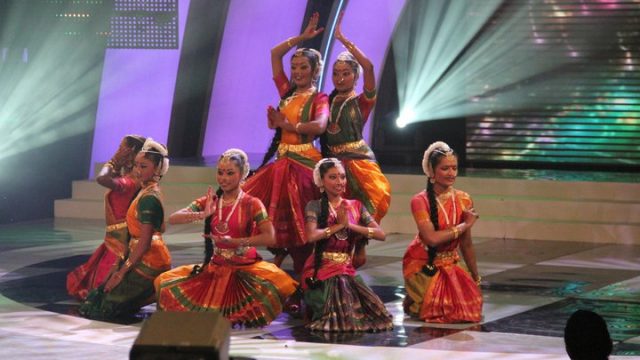
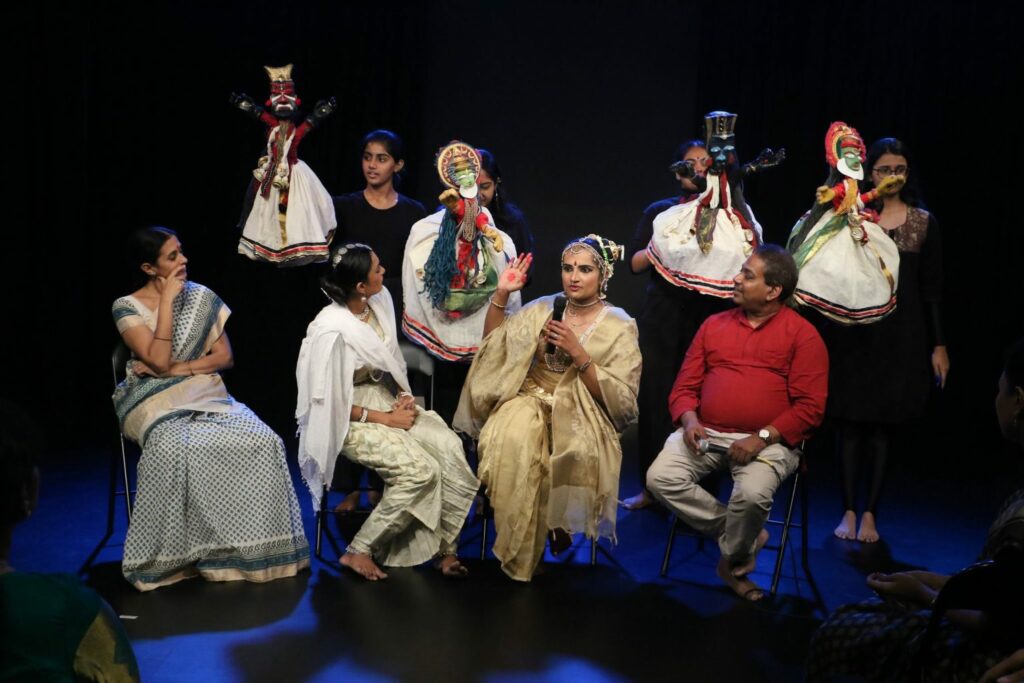
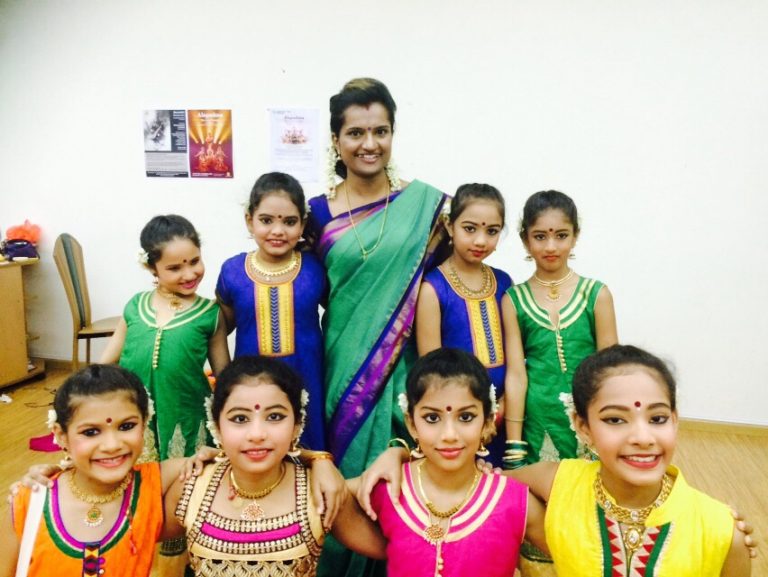
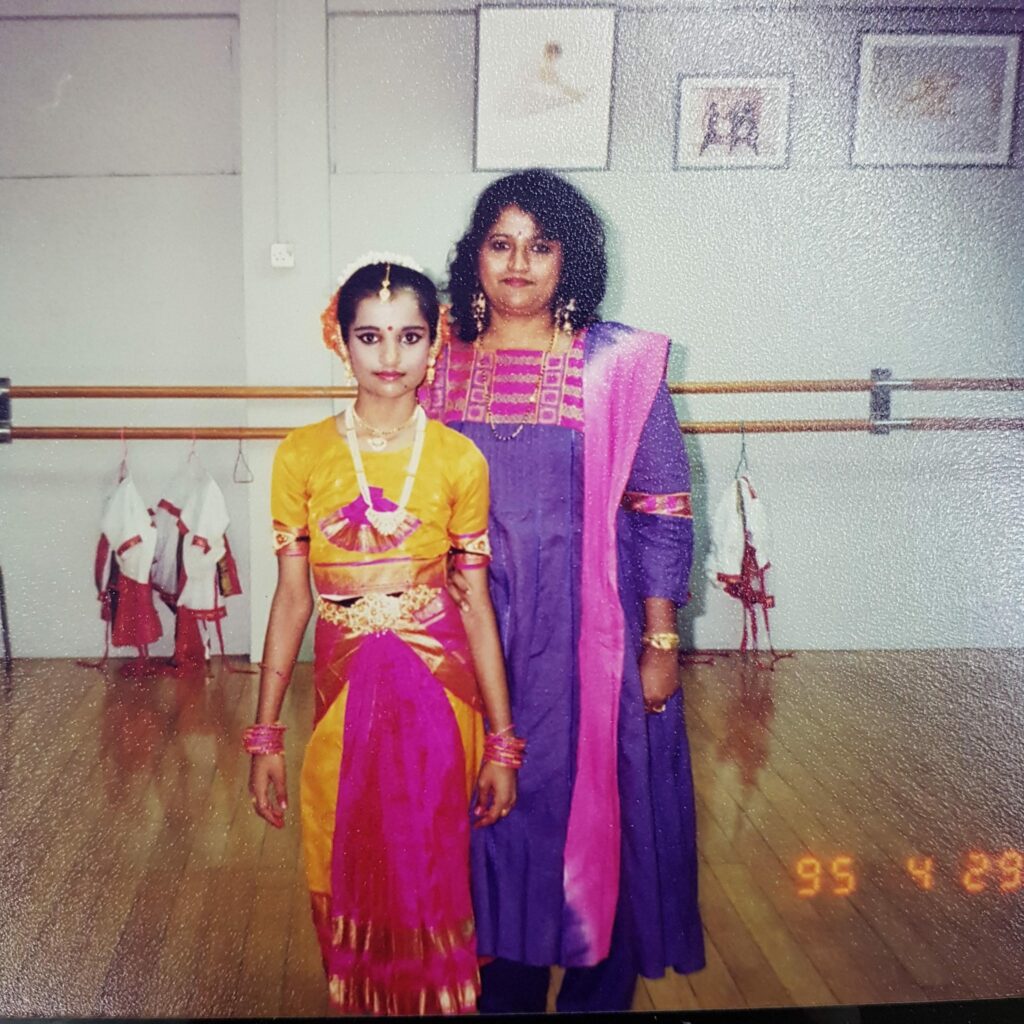
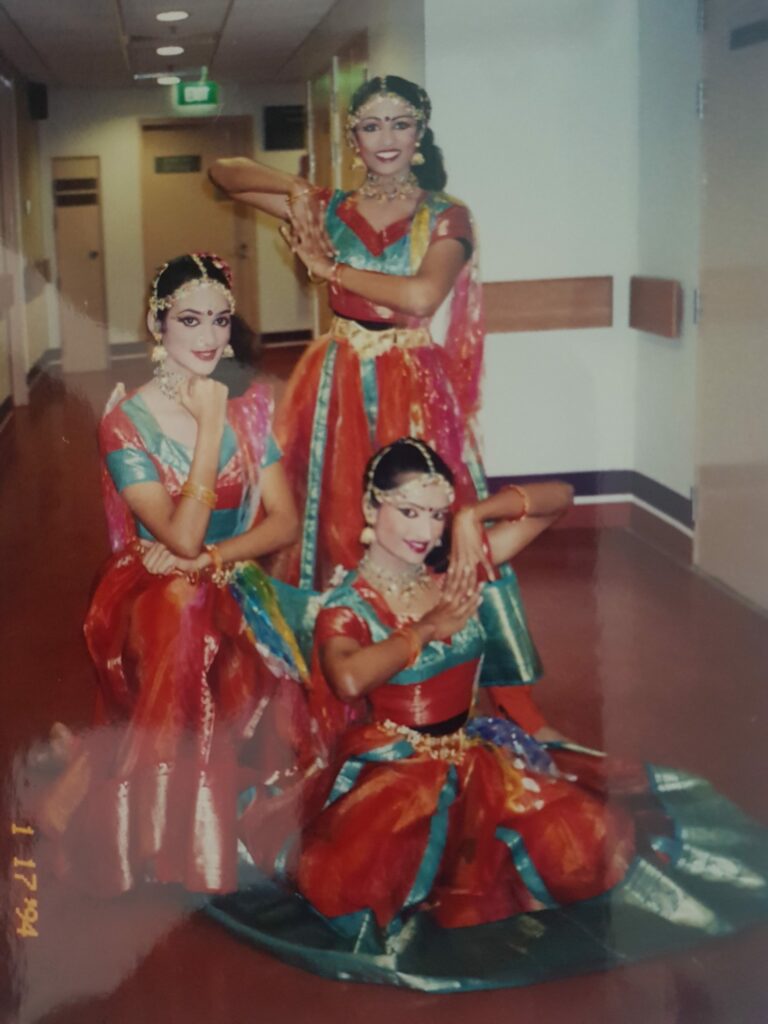
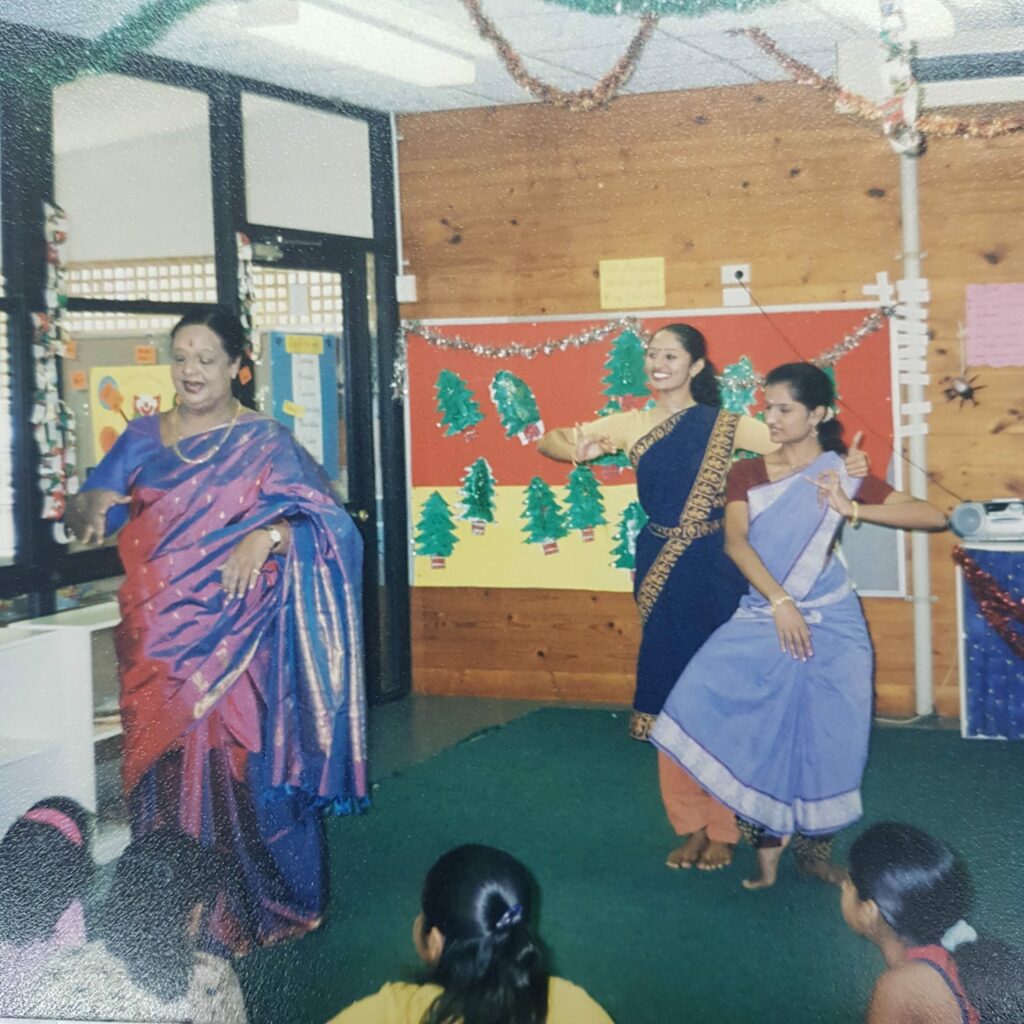
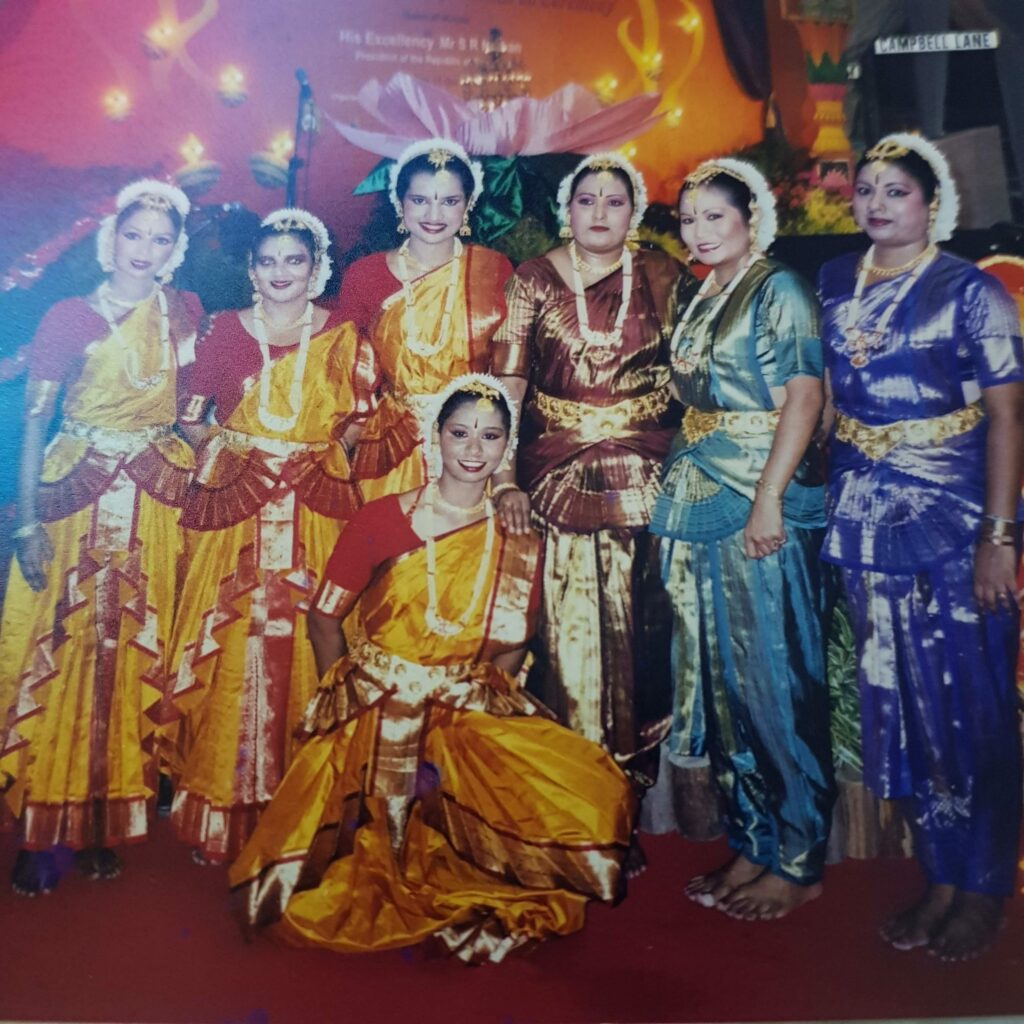
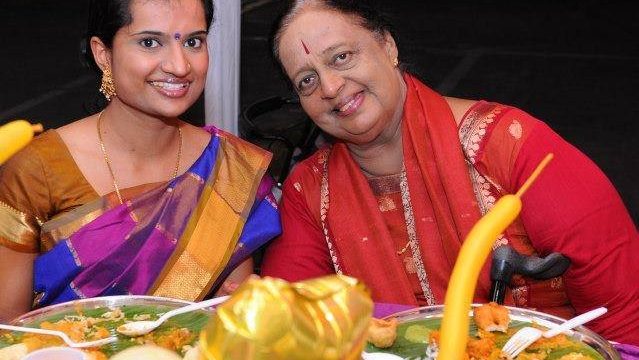
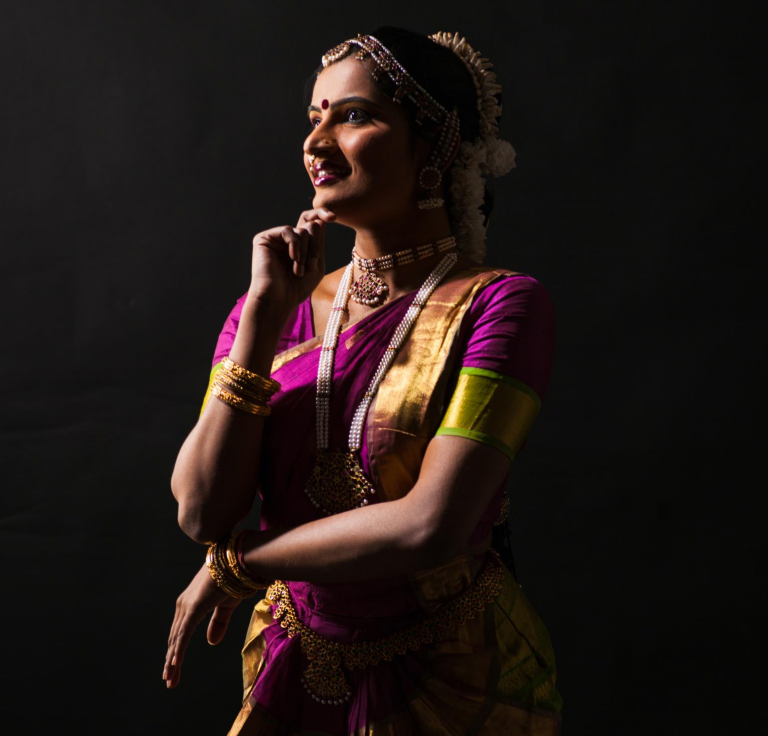
VN: What are your memories of Mami from that time and later? SH: She came into my life at the right age, when I was maturing and over time, I was able to overcome my fear and she became an important person I respected deeply. Mami had an extrovert’s personality. She was confident but her strength, I observed came from Mama. For years, I don’t think I realised it till after his death. They were such a dynamic team – Mama & Mami. They had the shared heritage and training of Kalakshetra. Intense memories of their own artistic journey, their romance on those grounds and deep attachment to their alma matter. These are values they led by example, constantly quoting their Gurus, industry legends and stalwarts. They made references to major artistes and revered their teachers. They embodied the culture of “Guru-bhakti” which only heightened your respect for them while at the same time, they were very grounded and humble in their disposition. VN: How did Bharatanatyam become serious for you? What made you pursue it further?SH: As I matured into a young adult, I began travelling with Mami for their overseas tours. In 2001, I became a company dancer and absorbed myself into the culture of travelling artistes. In Dec 2005, I spent an extended period in Chennai which was an important cultural immersion for me. Learning yoga, Sabha-hopping, appreciating and understanding the way performing arts is a part of everyday life of an artiste. Mami was protective on these trips yet she gave me room to grow and trust her decisions. It was a competitive time to be in an ensemble of older, more experienced dancers. I found myself performing in parts and kept myself available for her. The learning process was important to me and it helped me build my own repertoire. [ e.g. Sivagami preparations exposed me to drama classes with G Selva who later set up Avant Theatre & Language][ See his interview Here ] There were occasions when despite my best efforts, Mami would choose others over me for key parts. At first, I would consider it a lost opportunity then I will reconcile with myself that it was not yet my time and Mami knows best. Perhaps I could not shoulder a huge role. Performing as an ensemble dancer needs you to be reliable. It has its own place and I realised that her decisions were well-thought out. VN: How did this exposure and experience bode for your future in Apsaras Arts? SH: Mami introduced me to the world of dancers. She presented many dancers I admired – Amala, Shobana, Anita Ratnam. She nurtured in me the idea of the physique and psyche of a dancer. I always felt that Mami herself had angst about not being able to dance. After her children, at age 26, she quit performing because she was unable to meet her own expectations of performing ‘without panting.’ I recall her first question to my soon to be husband Naveen in 2010 was “Will you let her dance?” so I appreciate that she used her angst positively to nurture others to continue to dance despite the challenges ahead. In 2003, I prepared and performed my Arangetram and within that year, I started to teach “Bala Bharatham”. I introduced Hinduism to young children through cultural stories. Mami identified the teacher in me. I learned by observing, sitting in her classes, occasionally running her classes with her, picking up additional dance items along the way. I wanted to be part of the process. This is how I came to work with Aravinth. I would watch him compose ragams for my Varnam. He had the same level of warmth as Mami did and the ability to say the right thing at the right time. I was first introduced to him in 2001, he was a talented hybrid of both music & dance. In those days, he was closer to Mama. Mama sang for my Padam. Initially, working with him seemed daunting. He was always well-groomed, impeccably attired, proud in his demeanour but really wore his heart on his sleeve. He placed importance on his 4Ds especially decorum. He was a passionate man, always direct, straight-talking and stated his opinion and hated the word “contemporary.” As he would say, “Con the people temporarily!” I loved his thirst for knowledge and eagerness to share. Even on our overseas trips, he would take time to explain a temple fresco. All of these traits I feel he has passed on to Aravinth. Today, Aravinth having been mentored by these talents, has been able to strengthen Apsaras Arts to a higher artistic level. As I prepared for my arangetram, I began to learn music from Mama in 2005 and through my teaching, I realised the importance of understanding compositions and how much more there was to learn. This opened a whole new dimension for me. I learned all the way till the time he came to be diagnosed with his illness. In those years, I had first-hand knowledge from him – anecdotes about composers, the people he learned from. The history and legacy of an artiste. If Mama had been a full-time artiste, he would have transformed the industry. He was an excellent photographer too. Copywriting, directing camera angles, printing aesthetics, working with visual, graphic art were all his forte. Mami on the other hand was good with her hands. She would make props, costumes, crochets. I began to appreciate the magic of the ensemble and I by then had begun to emcee a number of productions. VN: What are some of the notable productions you have been a part of? SH: I have been featured on the ensemble of all Apsaras Arts’ productions since 2001. In Sita’s Magical Forest, I played Sita, scripted by Aravinth’s mother, Swarnakanthi Kumarasamy. She gave Sita relatable language, contextualised the work and created an emotional graph that connected with audiences. That work is now timeless – relatable and enjoyed each time it’s been performed over the decade. [ Sita’s Magical Forest was recently shown online as part of Indian Heritage Festival in September 2020] I have also played the role of the “Sutra-dari” (narrator) in several productions such as Alapadma and Agathi. [ In February 2020, Seema became the first recipient of the inaugural “Neila Satyalingam Memorial Endowment Award,” an award introduced to honour and encourage & support emerging, promising dancers] VN: In your opinion, what is an important ingredient of a successful production? SH: Trust. In the decisions of the Artistic Director. Not needing to second-guess or question the decision. The passion for dance is critical and the role is to communicate – “Not what you do, it’s how you do it.” Being able to identify talent is important. I think it’s wise to leave it to them. An artiste is not greater than the art. There should be a need for a journey & no instant gratification. VN: Where do you see Bharatanatyam in Singapore today? SH: I feel the current generation needs to slow down a bit. Dr Roshni Pillay is a good example. [ She did solos in her 40s]. I find the younger dancers very enterprising but a tad self-centric, perhaps brought on by mediums like Instagram. The solo in Bharatanatyam is progression AFTER the ensemble and when skills are fully developed. This important step in the journey is often skipped. Performing is not about the self alone. It is about the audience, the collective. The spirit to connect with people and collaborating to create. I recently completed the DIAP Residency. [ This program enables mentorship and presentation of a fully conceived and delivered work by the resident] It was a steep learning curve to be mentored by my dance idol, Priyadarshini Govind. It was an opportunity for me to humanise my idol. To understand what’s is the secret to her success as a dancer? Turns out its hard-work! How anticlimactic! She taught me that dance is a place where one can forget oneself completely to become one with the art itself. [Seema belonged to the first batch of DIAP Residency 2018-19 dancers and presented her thematic solo presentation “Mohini” in Singapore in September 2019 & Chennai in January 2020, a year after she had her second child]. VN: Where do you see yourself in dance today, Seema? SH: Dance has been the motivation for me to press reset in my daily life. I have tremendous gratification to complete a repertoire and even in my student days. I have never missed class on major exam days. Dance has helped me – kept me on my toes. I was pregnant at 36 weeks and still dancing, bending even! 6 months after my eldest, Deeksha was born I was dancing again at the premier of Anjasa in 2015. Dance defies age. The physiological changes help you overcome other tensions in life. Today in Apsaras Arts, I’m proud of my role as a humble change agent. Back in 2004, four dance friends (Loga, Deva Priya, Somi and myself) thought up the idea that Mami needed to convert from a sole-proprietorship to a limited company. For years, we saw Mami pay for costumes on her own and tirelessly source for sponsorship for overseas tours and receive nothing in return. We wanted sustainability and a future for our generation and beyond. We galvanised our seniors and persuaded Mama and Mami to get serious about incorporating a company and running it professionally. The need for succession was broached. They were receptive and I remember us gathering at the Ceylon Sports Club in February 2005 to discuss the details. Mama was keen to include Aravinth as his understudy and successor. In no time, the Apsaras Arts company was incorporated in July 2005. I’m proud to say that this move was the fruit of our labour, by the students who cared about Mama-Mami and their legacy. It was something we achieved when both of them were around and today the company has grown in strength and their efforts are continuously nurtured and we see a secure future in dance.




